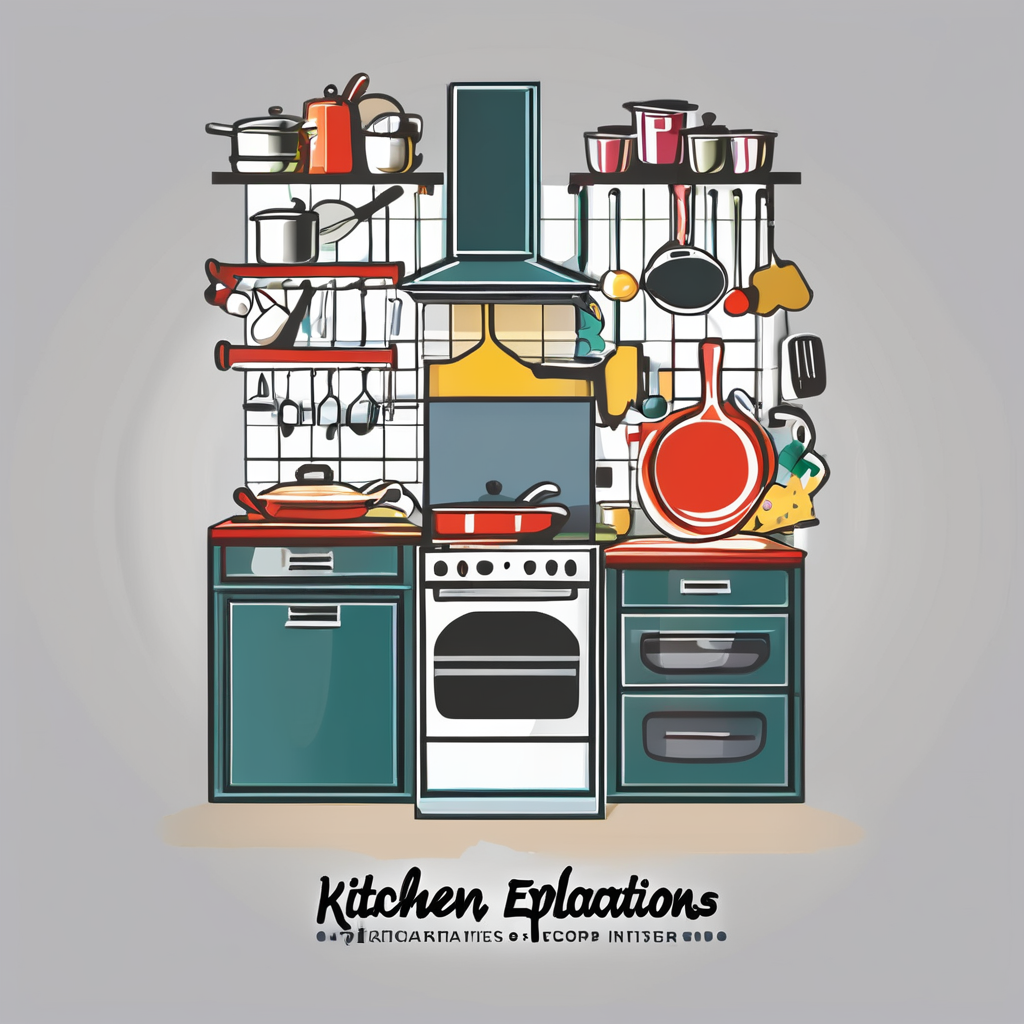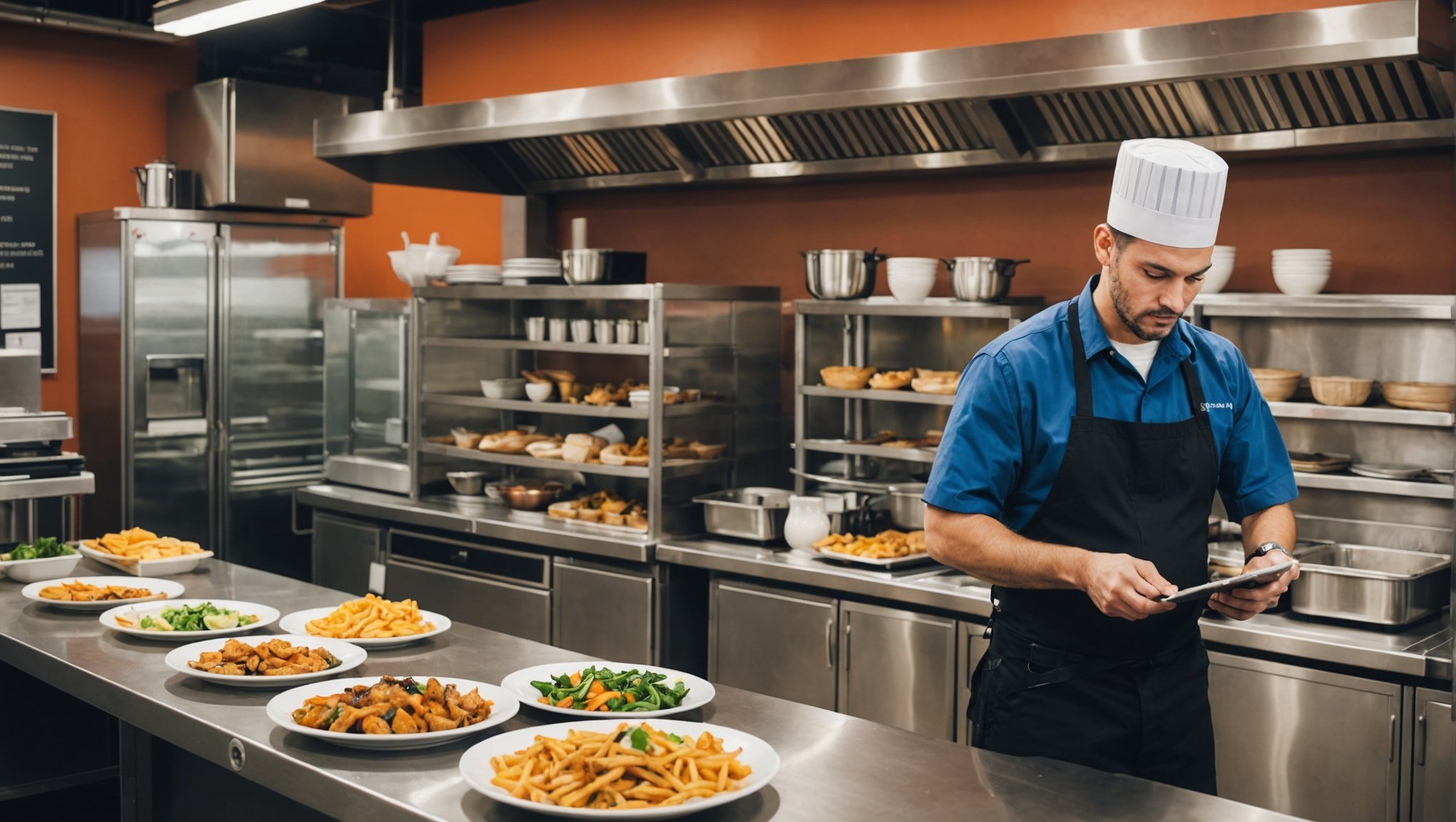Inventory control in multi-site restaurant operations faces unique challenges, from fluctuating demand to varying stock levels. Harnessing IoT technology can revolutionize this process, offering real-time data and streamlined management. With smart sensors and automated tracking, restaurants can optimize stock levels, reduce waste, and enhance decision-making. Discover how embracing these innovations leads to superior efficiency and significant cost savings across multiple locations, transforming the way the restaurant industry operates.
Understanding IoT Technology in Inventory Control
In the realm of multi-site restaurant operations, the integration of IoT technology is revolutionising inventory control. IoT, or the Internet of Things, refers to a network of interconnected devices that communicate and exchange data. This technology is particularly relevant to inventory management because it enhances real-time visibility and accuracy across various locations.
Additional reading : Top Tips for Perfectly Storing and Showcasing Artisanal Cheeses in Your Restaurant
Key Components of IoT Systems
Several components make IoT systems indispensable for restaurant inventory control. Smart sensors are used to monitor stock levels, temperature, and humidity, ensuring optimal storage conditions. RFID tags and GPS tracking devices help in tracking inventory movement and location, reducing the chances of stockouts or overstocking. Additionally, IoT platforms provide data analytics tools that offer insights into consumption patterns and inventory needs.
Benefits of IoT in Inventory Management
The advantages of employing IoT technology in inventory control are numerous. Firstly, it improves inventory visibility, allowing managers to access real-time data on stock levels and conditions. This leads to more informed decision-making and efficient resource allocation. Secondly, IoT systems enhance accuracy by automating data collection and reducing human error. Lastly, the predictive analytics capabilities of IoT help in forecasting demand and planning inventory purchases more effectively, ultimately leading to cost savings and improved operational efficiency.
In parallel : Mastering Food Quality During Rush Hour: Tips for Busy Diners
Case Studies of IoT Implementation in Multi-Site Restaurants
Exploring the practical application of IoT technology in the restaurant industry reveals significant enhancements in restaurant efficiency.
Successful IoT Adoption: A Leading Restaurant Chain
A prominent example of effective IoT implementation is a leading restaurant chain that integrated IoT across multiple sites. This chain utilised smart sensors and RFID tags to streamline their inventory processes. As a result, they experienced a marked improvement in efficiency, with real-time data providing precise insights into stock levels and conditions. This proactive approach not only minimised waste but also optimised ordering processes, leading to a reduction in costs.
Lessons Learned from Early Adopters
Early adopters of IoT in the restaurant sector encountered various challenges but also gained valuable insights. One key lesson was the importance of selecting the right IoT platforms that align with specific operational needs. Additionally, training staff to effectively use new technologies was crucial in overcoming initial implementation hurdles. These experiences underscore the necessity of a strategic approach to IoT adoption, ensuring that the technology truly enhances restaurant efficiency.
Comparative Analysis of Before and After IoT Integration
Comparing inventory management metrics before and after IoT integration highlights substantial improvements. For instance, a restaurant chain reported a 30% decrease in stock discrepancies and a 20% increase in inventory turnover rates. These statistical improvements underscore the transformative impact of IoT on inventory control, showcasing how real-world examples can lead to significant efficiency gains and cost reductions.
Best Practices for Leveraging IoT in Inventory Management
Implementing IoT solutions in restaurant operations requires a strategic approach to maximise benefits in inventory management. Here are some best practices to guide the process.
Assessing IoT Readiness
Before adopting IoT, it’s crucial to evaluate your restaurant’s current infrastructure and processes. This involves assessing the technological capabilities and identifying areas where IoT can provide the most value. Conducting a thorough readiness assessment ensures that the transition to IoT solutions is smooth and effective, paving the way for successful implementation.
Selecting the Right IoT Tools
Choosing the appropriate IoT tools and technologies is essential for optimising inventory management. Consider factors such as compatibility with existing systems, scalability, and ease of use. The right tools should align with your specific operational needs and offer features that enhance efficiency and data accuracy. Engaging with vendors that provide comprehensive support and maintenance services can also be beneficial.
Training and User Adoption
To fully leverage IoT in inventory management, training staff is a critical step. Implement a structured training program that focuses on both the technical and practical aspects of using IoT solutions. Encourage staff to embrace the technology by demonstrating its benefits, such as reducing manual errors and improving inventory accuracy. Ensuring user adoption is key to realising the full potential of IoT in your operations.
Cost Savings and Efficiency Gains from IoT Integration
Integrating IoT technology into multi-site restaurant operations offers substantial cost savings and boosts in efficiency gains. By leveraging IoT solutions, restaurants can significantly enhance their operational efficiency, leading to both immediate and long-term financial benefits.
Analyzing Cost-Benefit of IoT Solutions
When evaluating the cost-benefit of IoT solutions, it’s essential to consider both the initial investment and the ongoing savings. The upfront costs of IoT devices, such as smart sensors and RFID tags, are offset by the reduction in manual labour and errors. Additionally, IoT systems streamline inventory processes, minimising waste and preventing costly stockouts or overstocking. This optimisation leads to a more efficient allocation of resources, ultimately resulting in considerable cost savings.
Quantifying Efficiency Improvements
To quantify the efficiency gains from IoT integration, restaurants should track specific metrics such as inventory turnover rates and stock discrepancies. For instance, an increase in inventory turnover indicates that stock is being replenished and sold more efficiently, reducing holding costs. Similarly, a decrease in stock discrepancies reflects improved accuracy in inventory tracking, minimising losses due to errors. By monitoring these metrics, restaurants can assess the tangible improvements in operational efficiency achieved through IoT integration.
Long-term Financial Impacts of IoT in Inventory Control
The long-term financial impacts of IoT in inventory control are profound. IoT solutions provide detailed data analytics, enabling restaurants to forecast demand more accurately and plan purchases effectively. This foresight leads to better financial planning and reduced costs over time. Furthermore, case examples have shown that restaurants implementing IoT can experience a significant return on investment, with some reporting up to a 30% reduction in inventory costs. These financial returns underscore the value of IoT technology as a strategic tool for enhancing operational efficiency and achieving sustained cost savings.
Challenges and Considerations in Implementing IoT
Implementing IoT technology in multi-site restaurant operations presents a unique set of challenges. Understanding these obstacles can help businesses prepare and strategise effectively.
Common Obstacles Faced During IoT Integration
One of the most significant challenges in IoT implementation is the integration with existing systems. Many restaurants operate with legacy systems that may not be compatible with modern IoT solutions. This can lead to increased costs and time spent on upgrading infrastructure. Additionally, the complexity of managing IoT devices across multiple locations can strain resources, requiring a robust IT strategy to ensure seamless operation.
Data Security and Privacy Concerns in Multi-Site Operations
With IoT technology, data security and privacy become paramount concerns. The interconnected nature of IoT devices means that a breach in one area can potentially compromise the entire network. Restaurants must invest in secure networks and encryption technologies to protect sensitive data. Furthermore, compliance with data protection regulations is essential to avoid legal repercussions and maintain customer trust.
Importance of Ongoing Support and System Maintenance
The successful implementation of IoT systems doesn’t end at installation. Ongoing support and maintenance are crucial to address technical issues and ensure optimal performance. Regular updates and system checks can prevent downtime and extend the lifespan of IoT devices. Engaging with vendors who offer comprehensive support services can ease the burden on internal teams and facilitate a smoother integration process.
Future Trends in IoT and Inventory Management
As restaurant technology continues to evolve, the future holds exciting possibilities for IoT innovation in inventory management. Emerging technologies are set to enhance IoT capabilities, providing even more robust solutions for multi-site operations.
Emerging Technologies Enhancing IoT Capabilities
The integration of advanced technologies with IoT systems is paving the way for more sophisticated inventory control. Innovations like blockchain for secure data transactions and 5G for faster connectivity are becoming integral. These technologies promise to improve data accuracy and speed, ensuring that inventory data is both reliable and quickly accessible.
Predictive Analytics and Inventory Forecasting
Predictive analytics is revolutionising how restaurants manage their inventory. By analysing historical data and market trends, IoT systems can forecast demand with remarkable precision. This foresight allows restaurants to optimise stock levels, reducing waste and ensuring that popular items are always available. The ability to anticipate needs not only enhances efficiency but also improves customer satisfaction.
The Role of Artificial Intelligence in IoT Systems
Artificial Intelligence (AI) is playing a crucial role in advancing IoT systems. AI algorithms can process vast amounts of data to provide actionable insights, enhancing decision-making processes. For example, AI can identify patterns in consumption, suggesting optimal reorder points and preventing stockouts. As AI technology continues to develop, its integration with IoT will likely lead to even more intelligent and autonomous inventory systems.
Predicting the future of IoT in the restaurant industry, we can expect a continued focus on automation and efficiency. The evolution of IoT will likely bring about more seamless integrations with existing restaurant technologies, further streamlining operations and driving down costs. As these innovations unfold, restaurants that embrace these trends will be well-positioned to lead in an increasingly competitive market.






